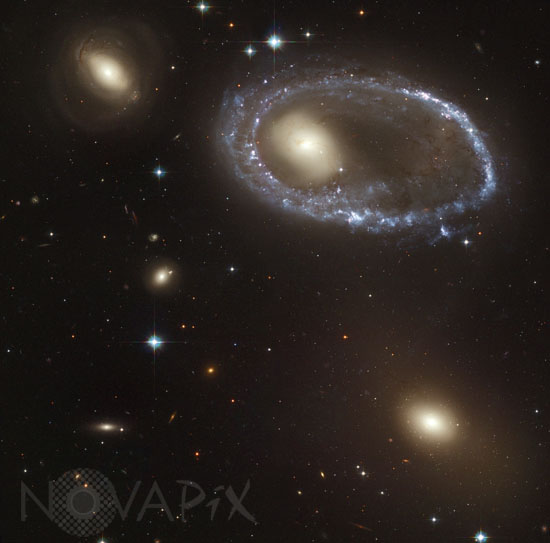Photo Agency - Astronomy - Space - Nature

Ring galaxy AM 0644-741 in Volans
author: Nasa/Esa/Hubble heritage team/Novapix
reference: a-gax95-00001
Image Size 300 DPI: 33 * 33 cm
This galaxy, cataloged as AM 0644-741, is a member of the class of so-called "ring galaxies." It lies 300 million light-years away in the direction of the southern constellation Volans. Ring galaxies are an especially striking example of how collisions between galaxies can dramatically change their structure, while also triggering the formation of new stars. In the case of AM 0644-741, the galaxy that pierced through the ring galaxy is out of the image but visible in larger-field images. The soft spiral galaxy that is visible to the left of the ring galaxy in the image is a coincidental background galaxy that is not interacting with the ring. The resulting gravitational shock imparted due to the collision drastically changes the orbits of stars and gas in the target galaxy's disk, causing them to rush outward, somewhat like ripples in a pond after a large rock has been thrown in. As the ring plows outward into its surroundings, gas clouds collide and are compressed. The clouds can then contract under their own gravity, collapse, and form an abundance of new stars. The rampant star formation explains why the ring is so blue: It is continuously forming massive, young, hot stars, which are blue in color. Another sign of robust star formation is the pink regions along the ring. These are rarefied clouds of glowing hydrogen gas, fluorescing because of the strong ultraviolet light from the newly formed massive stars.
Contact : Stéphane Aubin +33-(0)9-51-26-53-76
© Novapix - All rights reserved


